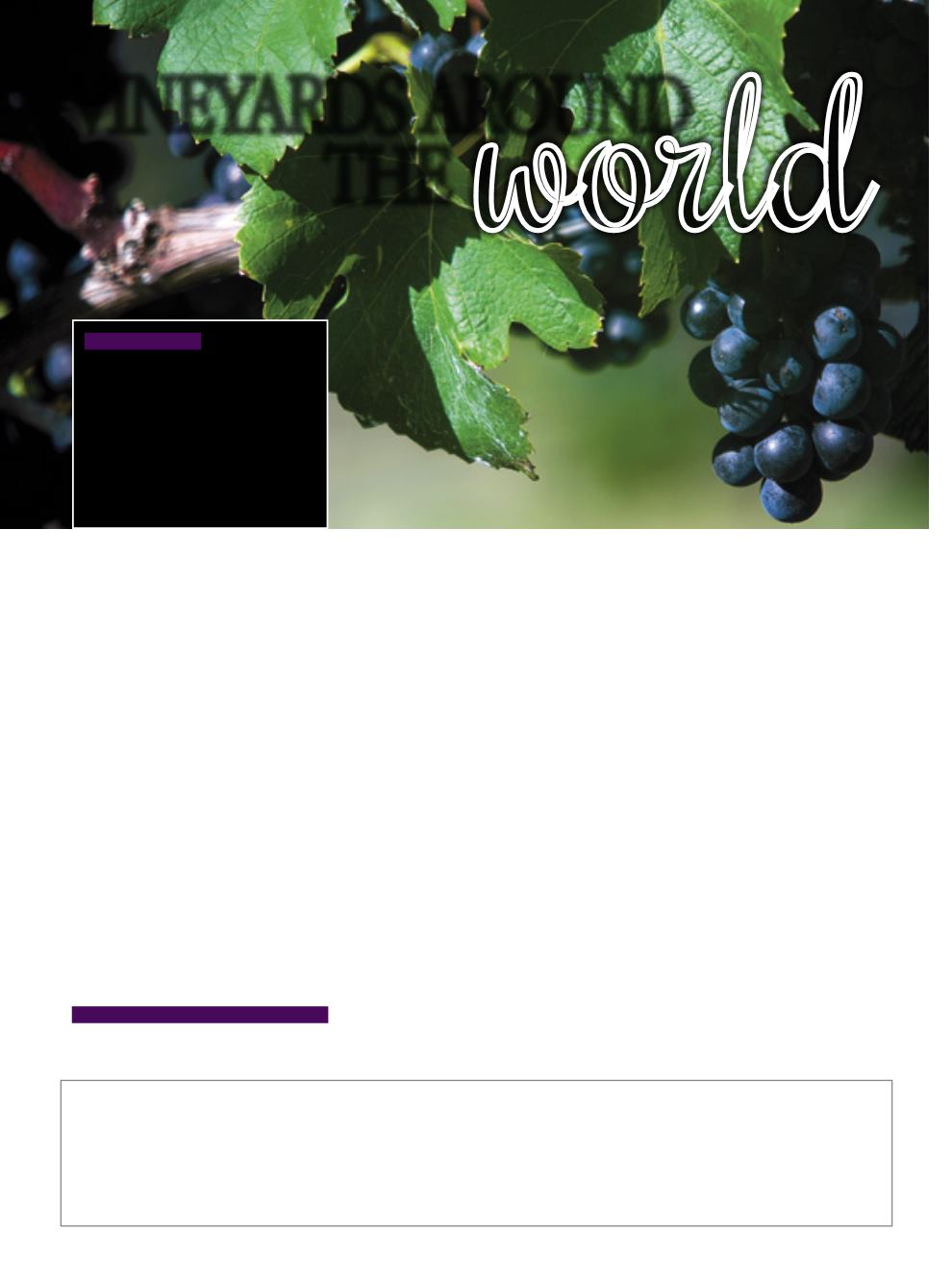
In 2015, Brazil ranked as
19th in areas devoted
to vineyards, with
79,483 hectares, and
13th as grape producer,
with 1,439,535 tons
Vineyards around
the
world
The International Organization of Grape-
vine and Wine (OIV), in 2014, ranked Brazil
as the 15th biggest producer of wine in the
world. In productive extension, the entity, at
that year, pointed to 89 thousand hectares
devoted to vineyards. In neighboring South-
American countries, traditional consumers of
the beverage, the cultivation of grapevines
was more expressive: Argentina, two years
ago, had 228 thousand hectares devoted to
the crop, while in Chile 211 thousand hect-
ares where planted to grapevines.
Although productivity has soared in
2015, the vineyard area suffered a reduc-
tion of 1.83% from the previous year. Data
released by Embrapa Grape and Wine refer
to the phenomenon as a trend that started
in 2013. The biggest reduction took place in
the State of Paraná, approximately 13.98%.
In the South, Rio Grande do Sul and San-
ta Catarina had an area reduction of 0.51%
and 0.98%, respectively. In light of this sce-
nario, the national representativeness in in-
ternational vitiviniculture equally shrank.
In 2015, in comparison with the other
winegrowing countries, Brazil ranked as
19th in area devoted to vineyards (79,483
hectares) and 13th in grape production
(1,439,535 tons). “In some Brazilian re-
gions, real estate speculation is contributing
towards the reduction in grapevine areas.
In other regions, climate related problems,
associated with the lack of labor, have dis-
couraged investments in viticulture”, says
researcher Loiva Maria Ribeiro de Mello,
from Embrapa Grape and Wine.
If for one thing, the production areas
are shrinking, on the other hand, the sup-
ply chain is celebrating the resumption of ex-
ports of table grapes, which had been on the
decline since 2009. “On the sector’s export
agenda, only grape sales went up in 2015.
Exports amounted to 34.38 thousand tons,
up 21.3% from the previous year, pointing to
chances for this market to recover”, she says.
In 2008, a record amount of 82.24 thousand
tons ended up in the international market.
The trend in 2016, in light of one of the
most complicated crops of the past years,
is for the Brazilian grapes to perform bad-
ly at home and abroad. Embrapa Grape and
Wine chief executive Mauro Celso Zanus,
estimates the losses at 25% or 30%, moti-
vated by climate interferences, which were
also responsible for the low sugar content
of the Brazilian grapes. “There is need to in-
tensify the debate focused on modernizing
the technology of the sector, capable of mit-
igating the adverse effects of an increasingly
erratic climate”, she argues.
INTERNATIONAL GRAPES
One of the recent figures published by the International Organization of Grapevine and Wine (OIV) shows that global production of
grapes in 2014 reached 73.7 million kilograms, harvested from 7,573 thousand hectares. These numbers were compiled by researcher José
Fernando da Silva Protas, from Embrapa Grape and Wine. At that year, the total planted area increased slightly, by 10 thousand hectares,
compared to 2013. China had the second biggest planted area in 2014, with about 880 thousand hectares, coming only after Spain, with
1,038 hectares. The Asian country ranked as first in production, with 11.1 million kilograms (15% of the total grape production), followed
by the United States (7.7 million kilograms), France (6.94 million kilograms) and Italy (6.89 million kilograms).
Inor Ag. Assmann
20


